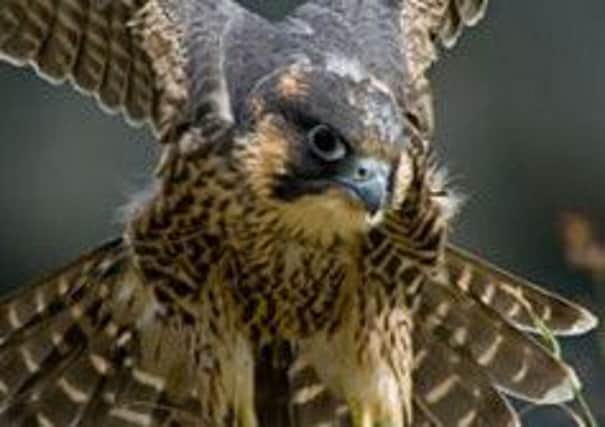Peregrines are star attraction at Malham Cove


The viewing scheme, which began in 2003 with a partnership between the Yorkshire Dales National Park Authority (YDNPA) and the RSPB, has welcomed its 200,000th visitor.
Set up to show the spectacular wildlife in and around the Cove, it also raises awareness of conservation issues and visitors can see a range of upland bird species alongside the nesting Peregrine falcons,
Advertisement
Hide AdAdvertisement
Hide AdAnd with four young Peregrines raised this season, it has been another successful year for the scheme.
Authority wildlife conservation officer Ian Court said: “It’s a huge achievement to reach this landmark figure and we are really pleased, especially as 2014 marks the 60th anniversary of the creation of the National Park.
“The popularity of these birds has never waned. As well as first-time visitors, many people have made several visits to the Cove during the season and come back year after year to keep track of their progress. And the figure includes more than 35,000 children who have stopped to see a Peregrine – many for the first time.”
The viewpoint will be open from Saturday to Wednesday until August 3. As well as the Peregrines, Green Woodpeckers and Great Spotted Woodpeckers are frequent visitors along with House Martins, Redstarts, Swallows and Little Owls.
Advertisement
Hide AdAdvertisement
Hide Ad· The Peregrine is the largest of British breeding falcon. It is 38-48 cm long, and its wingspan is 95-110 cm. The female is considerably larger than the male. The upper parts are dark blue-grey, and the under parts are pale with fine, dark bars. The head has a black ‘hood’ with black moustache-like markings on the face. Juvenile birds are browner and heavily streaked below
· Peregrines typically pair for several years and may live up to 10 years old - the oldest on record was 15 years and 6 months old
· Both adult birds tend the young, which take their first flight after 5 or 6 weeks
· Peregrines feed on medium sized birds, which they catch in high-speed aerial stoops – although more often than not they fail to make a kill
· Peregrine numbers crashed in the 1960s due to the impact of pesticides. Peregrines have now increased in numbers, to about 1,300 breeding pairs in the UK.